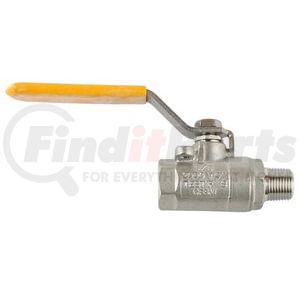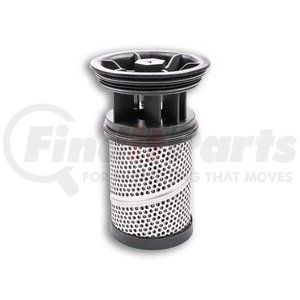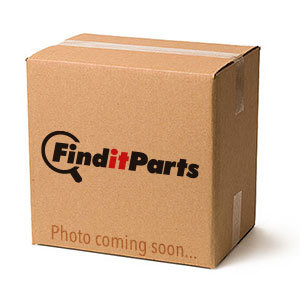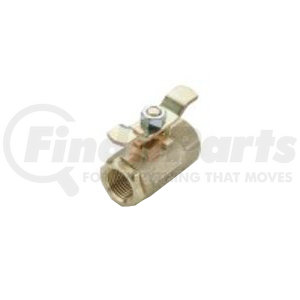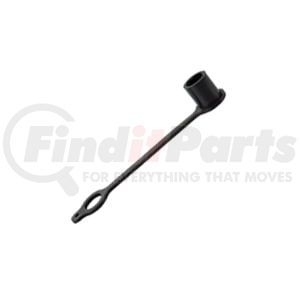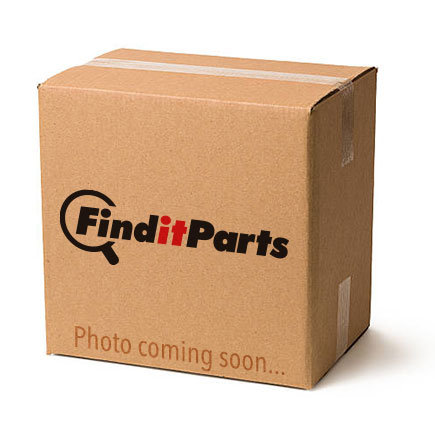
Parker Hannifin DSL101NR - 2 Way Poppet Type Solenoid Valve
- Part Number
- DSL101NR
- Manufacturer
- PARKER HANNIFIN
- Description
-
2 Way Poppet Type Solenoid Valve
details
$18349
3 day lead time
PARKER HANNIFIN part description
Markets:
• Aerial
• Construction
• Material Handling
• Miscellaneous Industrial
• Miscellaneous Manufacturing
• Miscellaneous Mobile
Features & Benefits:
• Replaceable one-piece coils with low amp draw
• Fast response available
• Manual override options
• Low leakage spherical poppet
• All external parts zinc plated
Applications:
• Unloading circuits
• Load holding applications
• Lift circuits
Additional Technical Insight:
Parker’s 2 way poppet valves are pilot operated, low leakage solenoid actuated valves. Similar to a check valve, these valves will block flow in one direction will very low leakage (5 drops per minute, or less). When actuated, these valves allow flow to pass through the valve. These valves are typically selected due to their low leakage characteristics and their ability to meet higher flow requirements. Poppet valves are often used on single operation actuators or in unloading functions. They are available in normally closed and normally open types with fast response versions available.
Parker’s two way, two position poppet valves consist of a main poppet, a pilot piston, a spring, and a solenoid coil.
The normally closed poppet version of these valves will act as a check valve when the valve is de-energized. This blocks flow in both directions while allowing free flow in the reverse direction. When the coil is energized, the poppet is piloted open (lifts) and allows free flow in the previously checked direction, typically from the side of the cartridge out the nose.
The normally open poppet version of these valves, when the coil is de-energized, will allow free flow from the side port of the valve (port 2) out the nose of the valve (port 1). Energizing the coil shifts the poppet to block flow in both directions.
Operation: The normally closed poppet valve is held on its seat by a spring, blocking the pilot flow. This will allow pressure at the inlet port (port 2) to hold the poppet on its seat preventing flow through the valve (port 2 to port 1).
If the nose of the cartridge (port 1) is pressurized enough to overcome the spring force, and pushing the poppet off of its seat, flow will be allowed through port 1 to port 2. When the coil is energized, the pilot poppet is lifted off of its seat, venting the pressure inside the poppet to port 1. This creates a pressure imbalance across the main poppet, therefore lifting the poppet and allowing flow from the side to the nose (2 to 1). Because these valves are pilot operated, a minimal amount of pressure differential is necessary (25-50 psi), along with flow between ports 2 and 1 must be present to overcome the spring and lift the poppet.
The normally open valve pilot is held off its seat by spring force. Pilot flow is vented to port 1, creating a pressure imbalance that moves the main poppet. This differential lifts the poppet allowing flow from the side to nose (2 to 1). Since poppet valves are pilot operated, a minimum amount of pressure differential (25-50 psi) between ports 2 overcomes the spring force to drive the valve pilot and main poppet into their seats, thus blocking flow from port 2 to 1. If the nose of the cartridge (port 1) is pressurized, the pressure will overcome the spring force and solenoid force, pushing the poppet off of its seat, allowing restricted flow through the cartridge (1 to 2).
Specifications
| Flow Direction | Side to Nose (2-1) |
| Rated Flow (gpm) | 15 |
| Rated Flow (lpm) | 60 |
| Maximum Inlet Pressure (psi) | 3600 |
| Maximum Inlet Pressure (bar) | 250 |
| Type/Configuration | Normally Open |
| Free Reverse Flow | Yes |
| Leak Rate (dpm) | 5 |
| Cavity size | C10-2 |
| override | N/A |
| Adjustment Type | N/A |
| Response Time (ms) | 35 |
| Wire Screen | N/A |
| Minimum Operating Voltage | 85% of rated voltage at 72°F (20°C) |
| Seal Material | D-Ring (Standard) |
| Operating Temperature (F) | -50° to +270° |
| Operating Temperature (C) | -45° to +132° |
| Valve Materials | All parts steel. All operating parts hardened steel |
| Rated Fluid Viscosity (cSt) | Mineral-based or synthetic with lubricating properties at viscosities of 45-2000 SSU (6 to 420 cSt) |
| Filtration Ratings | ISO 4406:1999 Code 18/16/13 |
| Weight (lb) | 0.41 |
| Weight (kg) | 0.2 |
| Installation Torque (lbs/ft) | 37-41 |
| Installation Torque (Nm) | 50-56 |
| Coil Nut Torque (lbs/ft) | 5-7 |
| Coil Nut Torque (Nm) | 7-10 |
| Coil Type | 5/8" Super Coil |
PARKER HANNIFIN DSL101NR Cross Reference
We have 2 alternatives for the DSL101NR by PARKER HANNIFIN:
Parker Hannifin® is a global leader in motion and control technologies. Included in the world's Fortune 250 companies, Park Hannifin's products are vital not only to automobiles but also to almost everything that moves or needs control. These include all forms of transportation, manufacturing and processing raw materials, as well as infrastructure development and construction. Established in 1918, the Parker Appliance Company's evolution into Parker Hannifin Corporation demonstrates a legacy of innovation and Parker's tradition of excellence. Parker Hannifin's product portfolio includes solenoid valves, hydraulic fittings, pressure relief valves, hydraulic pumps, polyurethane tubing, thermal and power management products, and other parts for climate control, hydraulics, filtration, fluid and gas handling, pneumatics, sealing and shielding, and many other applications.
 California Proposition 65 Warning
California Proposition 65 Warning
Don't know your part number?
Take a photo and we'll identify it!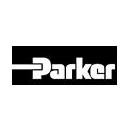

 California Proposition 65 Warning
California Proposition 65 Warning
